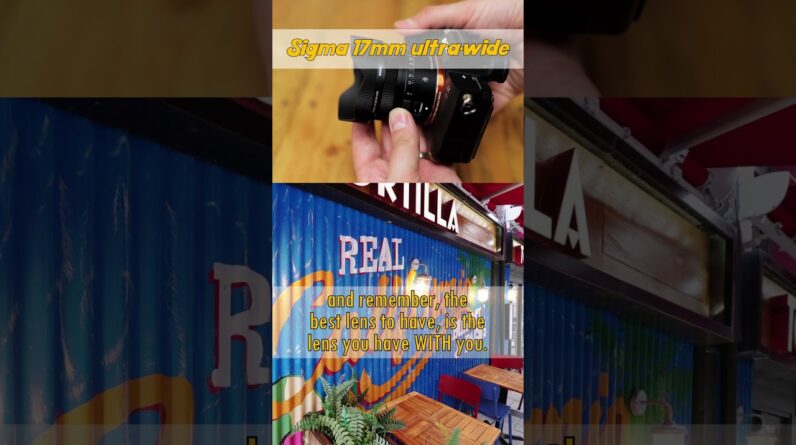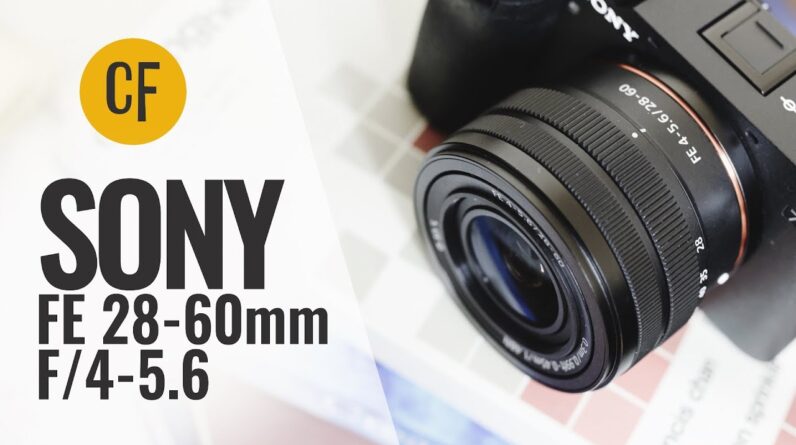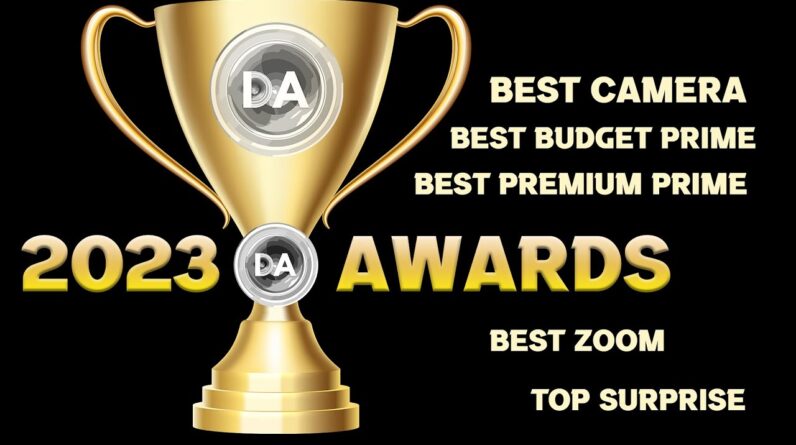Hi I'm Gordon from camera labs and this Is my review of the nons SL 660 a fully Analog manual SLR camera designed for Fujifilm's in stack square film now I Enjoy instant photography but fujifilm's Recent analog cameras like the sq4 here Are mostly automatic lacking any manual Override for when you want to get more Creative luckily a number of thirdparty Cameras have become available for those Who desire more control over things like The focus the exposure and even the Choice of lenses while still using Standard Instax film cartridges at the Time I made this video nons offered a Pair of SLR cameras with full manual Exposure control and passive EF lens Mans allowing you to fit any compatible Or adapted lens the SL 645 body costs Around £435 and uses Instax Mini film while the SL 660 costs £482 and uses insta Square film both are Sold via their website at ons camera.com I'll put a link in the description the SL 660 is a pretty substantial camera Although place it alongside the sq4 and You'll see it shares a similar width and Height or beit obviously being thicker Due to a lens that doesn't fold into the Body when not in use the really big Physical difference though is build Quality with the SL 660s anodized Aluminium body stainless steel dial and
Wooden grip giving it a significant step Up over the mostly plastic Fujifilm Cameras but these materials Unsurprisingly also make it much heavier With the SL 660 and 35 2.4 lens weighing In over double the sq4 and that makes it A camera to carry around in a bag rather Than a large pocket around the back You'll find a power switch a USBC port For charging the internal battery and a Button to eject the print now since this Eject button is independent from the Main shutter release it's possible to Easily capture multiple exposures on a Single single print and only eject it When you're ready on the top is a Shutter dial with speeds from 250th of a Second to 1 second in One-Stop Increments along with the bulb mode Which keeps the shutter open while the Main release button is pushed in you'll Notice a tiny display sandwich between The shutter dial and the viewfinder head Which works alongside a built-in light Meter together these suggest an Appropriate aperture for whatever Shutter speed you've selected on the Dial now remember as a fully manual Camera the SLC 660 won't be setting the Aperture for you so the displayed value Here is only a suggestion the light Meter is also positioned above the lens So it's not actually metering the light Coming into and through the lens and it
Won't know say if the lens Cap's been Left on or your fingers in front of it The mini display also indicates the Battery life and the shots remaining in The cartridge the battery should be good For around 100 shots but you'll need to Recharge via a usba a adapter as it Won't support fast USBC to C charging so They Supply it with a c to a cable oh And while there's no built-in flash that Is a hot shoe at top the viewfinder head And that allows you to synchronize with Compatible flash guns at up to 250th of A second on either side of the lens Mount on the front are two satisfyingly Mechanical controls the viewfinder Slider on the right which primes the Camera to shoot and the shutter release Button on the left the circular top to The shutter release can be unscrewed to Fit a threaded cable release if you Prefer back caps for those bulb Exposures although do beware this cap Can fall off in general use if not Screwed on tight you can still use the Camera without it though the SL 660 and SL 645 employ a Canon EF bayonet Allowing them to mount any compatible Lens not to mention Nikon F Pentax K Contax yashika or m42 lenses via Optional adapter rings as a passive Mount though there's no electronic Control over aperture or Focus so if you Were fit say an EF lens with no apture
Ring like my old EF 85 1.8 USM here is Only going to operate with its maximum Aperture so that's 1.8 in this case as Search you're best off mounting or Adapting older 35mm film lenses with Apertur rings and mechanical focusing or Using the fully manual 35 mil 2.4 or 50 Mil 1.8 lenses from nons itself costing £88 or £48 respectively I use the £35 5 Mil 2.4 for my tests as well as trying Out my own Canon EF 85 1.8 now since the Instax formats are much larger than 35 Mm or fullframe sensors though both of These slrs employ built-in focal Reducing Optics to roughly deliver the Same coverage so a lens that's designed For fullframe or 35 mil film cameras Will deliver approximately the same Field of view when mounted on one of These nons slrs some lenses will however Suffer from vignetting or darkening in The corners and others especially longer Ones may even reveal a square mask Around the edges so non recommends Lenses in the range of 28 to 58 mil on The SL 660 but instant analog Photography is rarely a precise science And unexpected artifacts for part of the Charm right okay so to get shooting First charge up the camera then fit an Inst stack square cartridge in the rear Compartment there's no alignment guides So position the yellow mark on the back Of the cartridge in the lower right
Corner next switch the camera on and if You're using a brand new cartridge You'll first need to eject the Disposable safety sheets so push and Hold the eject button on the back for a Couple of seconds to do so after this Push down the viewfinder lever to Prepare the camera to shoot then compose The shot through the viewfinder manually Focus the lens then adjust the shutter Speed and lens aperture for the desired Exposure you could use the built-in Meter for guidance or try your own Better meter if you have one or simply Base your exposure you're on a typical Value for these conditions remember that Instax film has a sensitivity of 800 ISO Then push down on the shutter button to Take the shot after which you should Push and hold the eject button on the Back for a couple of seconds to eject The print and again if you want to make A multiple exposure just reime the Viewfinder lever and re-shoot as many Times as you like before ejecting when You're done now as your first print from The SL 660 gradually Fades into view two Things will become apparent most Obviously the print will have captured a Much broader field of view than the Viewfinder showed you when you composed It and secondly the wide white border on The print will be positioned on the left Side rather than the bottom if you're
Holding the camera normally or you have It mounted a top of tripod dealing with The first issue the SL 660 may be an SLR With angled mirrors inside to reflect The light from the lens into the Viewfinder but they're not actually Large enough to deliver anywhere near The full field of view this becomes Obvious the moment you you compose as The viewfinder shows a rectangular image But of course the output is square to be Fair an SLR with a square mirror to Deliver the full view would make this Camera considerably thicker heavier and More expensive so nons decided on a Simpler approach with no film loaded and The rear door open you can see how it Works pushing the main lever down lowers The viewfinder Optics between the lens And the film and it's clear how it's Only able to Peak at a portion of the Image when you push the shutter release Button this unit pops up WS to clear the Optical path and uses a leaf style Shutter in the built-in Optics to Actually make the exposure it's barely Visible here at the fastest speed of 250th of a second so here it is again at 15th where you may see the shutter blink And now for a 1 second exposure where The shutter opening and closing becomes More obvious the other thing that's Obvious is the sound of this mechanism Now the leaf shutter may be quiet but
The viewfinder mechanism getting out of The way makes for a substantial clunk Which I actually personally enjoyed Although it's not exactly discreet Either way it's this design approach That allows the SL 660 to not only Mount But Focus any lens that you attach Without the body becoming too thick the SLR view finder lets you focus with the Actual lens while also previewing the Depth of field depending on the selected Apture value although it is easiest to Focus with the aperture wide open so I Tended to do that before closing it down To the desired exposure but again this Simpler design means that the viewfinder Will not show you anywhere near the full View that you're capturing so some Imagination is required to compensate Here's a photo I took through the Viewfinder showing the actual view while I was composing on the left and the Actual final print that I got on the Right where it's clear how much cropped The viewfinder is if you're holding the Camera horizontally you're going to have To expect a great deal of extra Headroom Above the viewfinder but also a bit more All around it too also remember with the The camera held this way around the Thicker blank border on the print will Be on the left side so if you prefer This thicker portion to be below the Image you'll need to turn the camera by
90° Counterclockwise and when it's this way Around most of that extra Headroom will Now be to the left of the viewfinder This all takes some getting used to and Ironically the basic Optical viewfinder On a simpler Fujifilm Instax camera can Actually give a better idea of the Overall composition orbe it without the SLR focusing or the chance to fit other Lenses now Framing and print orientation May have been my initial issues but I Also had some exposure worries since the Built-in meter isn't measuring the light Coming in through the lens it should be Used as a basic guide only I often found That bright reflective objects like White buildings in direct sunlight could Become Overexposed using the suggested Metering while dimly lit Interiors could Actually become Underexposed but unlike fujifilm's Analog cameras there's plenty of Exposure latitude at either end of this Scale if you need to adjust again the Trick is to learn the fo balls of the Built-in metering system and compensate For it deliberately under or Overexposing the values it suggests Under conditions that you know Previously tripped it up or of course Just use a more sophisticated light Meter or even the recommendation from a Separate camera but with this many
Gotchas why use the SL 660 instead of a Mostly automatic Fujifilm instat camera The answer is having full manual control Over the exposure and being able to not Just fit different lenses but control Their focus and the depth of field I've Personally found fujifilm's analog in Stacks cameras often overexpose bright Outdoor landscape scenes but once you've Mastered the metering on the SL 660 it's Possible to not only achieve a balanced Exposure but even deliberately Underexpose outdoor scenes for Creative Effects plus you could always fit a Filter on the end of the lens if you Want to use larger apertures in daytime Too for shallow depth of field effects Although you would need to manually Factor that into your exposure again the Metering system is not going to know Anything about any filters that you Mount meanwhile with a bulb option you Could even attempt long exposures on This camera and again there's a chance To fit a flash if you desire in terms of Depth of field it really is possible to Achieve some blurring with large Apertures even at f2.4 on the 35 mil Nons lens first time SLR users or those Who wear glasses may find it a bit Tricky to nail the precise Focus using The viewfinder screen but the experience Isn't a w apart from many old 35 mil Film slrs it's something you get used to
Over time as promised I also tried my Old EF 85 mil 1.8 lens and again in the Absence of an aperture ring it became F1.8 only but that's how I wanted to use It right so here's a shot on the left With the nons 35 2.4 at f2.4 while on The right is the EF 85 1.8 at f1.8 both Showing the potential for boa blog and Becoming the Envy of any analog Fujifilm Instax camera and for portraits here's The 35 2.4 on the left and the 85 1.8 on The right again both at their maximum Apertures showing some blurring in the Background orbe the latter also Exhibiting substantial vignetting indeed Throughout my time with the SL 660 I Found many of my shots were darker in The corners than expected or displayed Other artifacts but that's mostly down To the combination of a particular lens And the built-in focal reducing Optics Couple this with my metering challenges And a viewfinder that only shows a small Portion of the view that you're actually Going to capture and it's fair to say That this is not a camera for exacting Photographers or those who demand Predictable results if you want an Instant analog SLR camera with precise Composition one option could be to fit An old hassleblad 500 series with a back That takes instant film and as look Would have it nons makes one of those Two ultimately though the SL 660 is is
Designed for analog lovers who want the Challenge and creative opportunities of Manual metering and focus the chance to Adapt a variety of lenses and crucially Capture images that genuinely look Different to those from a simple Fujifilm analog body it may not be for You personally but I love that a number Of third parties are now providing Interesting alternatives to shooting With instant film that said I'm still Not letting Fujifilm off the hook and Will sign off with my usual request that They also make a series of analog Stax Cameras with more creative control just Look at the Polaroid I to if you need Any further inspiration oh and don't Forget your wide format either and That's it for this review if you're an Instant photographer or indeed an SLR Owner would you be tempted by a camera Like this or are you looking for a Different experience tell me in the Comments what kind of instant camera You're looking for and remember if you Just want a simple cheaper Fujifilm Camera or printer I've got reviews of All of them on my channel so thanks for Watching and I'll see you next time Bye-bye






